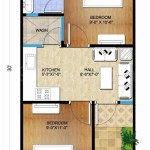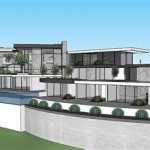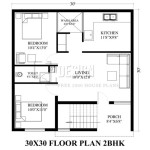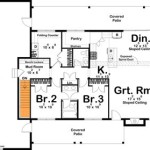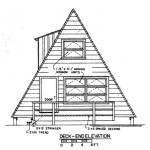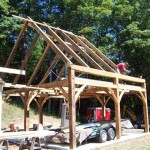Open Concept Lake House Plans: Maximizing Views and Connection
Open concept lake house plans are a popular choice for those seeking to create a relaxed, inviting, and expansive living space that seamlessly integrates the interior with the natural beauty of the surrounding lakeside environment. These designs prioritize maximizing views, fostering social interaction, and enhancing the overall sense of spaciousness and light within the home. Successful implementation requires careful consideration of factors like structural support, zoning regulations, climate control, and interior design elements. This article will explore the key principles, advantages, design considerations, and best practices associated with open concept lake house plans.
Understanding the Open Concept Design
The core principle of open concept design revolves around minimizing interior walls to create a unified, flowing space. Typically, the kitchen, living room, and dining area are combined into a single, large area. This allows for unobstructed sightlines, improved traffic flow, and a greater sense of connectivity among occupants. In the context of a lake house, this design approach allows for panoramic views of the lake to be enjoyed from multiple vantage points within the main living space, rather than being confined to separate rooms. The open layout also facilitates entertaining, as guests can easily mingle between different activity zones without feeling isolated.
Historically, homes were typically divided into distinct rooms, each serving a specific purpose. The open concept gained popularity in the latter half of the 20th century, driven by a desire for more casual and interactive living. Architects and designers began experimenting with removing walls and creating more flexible spaces that could adapt to the changing needs of a family. This trend coincided with advancements in building materials and construction techniques, which enabled larger spaces to be spanned without the need for load-bearing walls in inconvenient locations.
While the term "open concept" implies a complete absence of walls, it is more accurately described as a strategic reduction of walls. Partial walls, columns, kitchen islands, and changes in flooring or ceiling height can be used to subtly define separate zones within the open space without completely obstructing views or hindering the flow of movement. This allows for a sense of openness without sacrificing all sense of distinct areas.
Advantages of Open Concept Lake House Plans
Open concept lake house plans offer a multitude of advantages that make them an appealing choice for homeowners seeking a modern and functional living space. These advantages extend beyond aesthetics and contribute to a more enjoyable and practical lifestyle.
One of the primary benefits is the enhanced natural light penetration. With fewer walls obstructing the flow of light, natural sunlight can reach deeper into the home, creating a brighter and more inviting atmosphere. This can also lead to reduced energy consumption, as less artificial lighting is needed during the day. This advantage is particularly important in lake houses, where maximizing the connection to the outdoors is a priority.
Another significant advantage is improved ventilation. Open spaces allow for better air circulation, which can contribute to a more comfortable indoor environment. This is especially beneficial in climates where humidity can be a concern, as proper ventilation can help prevent the growth of mold and mildew. Strategically placed windows and doors can further enhance ventilation, allowing for natural breezes to flow through the home.
The enhanced social interaction facilitated by open concept designs is often cited as a key benefit. The open layout encourages family members to spend more time together, as they are not confined to separate rooms. This can lead to stronger family bonds and a more vibrant social atmosphere. When entertaining, the open layout allows the host to easily interact with guests while preparing food or drinks, creating a more inclusive and enjoyable experience for everyone.
Finally, an open concept design can create a perception of greater space. Even in a smaller home, the absence of walls can make the space feel larger and more airy. This is particularly valuable in lake houses, where homeowners may want to maximize the sense of spaciousness to create a more relaxing and comfortable environment. The visual flow of the open space allows the eye to travel freely, further enhancing the perception of expanse.
Design Considerations for Open Concept Lake Houses
While open concept lake house plans offer numerous benefits, successful implementation requires careful consideration of various design elements and potential challenges. These considerations range from structural integrity to acoustic management and climate control.
Structural support is a crucial factor to consider when removing interior walls. Walls often play a vital role in supporting the roof and upper floors of a building. Removing a load-bearing wall without proper structural reinforcement can compromise the integrity of the entire structure. Structural engineers must be consulted to assess the load-bearing capacity of existing walls and to design appropriate support systems, such as beams and columns, to compensate for the removed walls. These support systems should be seamlessly integrated into the design to minimize their visual impact.
Zoning and building codes often dictate the permitted use of space and the required setbacks and building heights. Open concept designs must comply with all applicable zoning regulations and building codes. This may involve obtaining permits for renovations or new construction, and ensuring that the design meets all safety and accessibility requirements. Fire safety is a particularly important consideration, as open spaces may require enhanced fire suppression systems to comply with building codes.
Acoustic management is another essential consideration in open concept spaces. The absence of walls can lead to increased noise levels and a lack of privacy. Hard surfaces, such as hardwood floors and drywall, can reflect sound waves, creating echoes and reverberation. Sound-absorbing materials, such as carpets, curtains, and acoustic panels, can be used to mitigate noise and improve the overall acoustic comfort of the space. Strategic placement of furniture and soft furnishings can also help to absorb sound and create quieter zones within the open area.
Climate control can also be a challenge in open concept spaces. It can be more difficult to effectively heat or cool a large, open area compared to individual rooms. Zoning the HVAC system can help to address this issue by allowing for independent temperature control in different areas of the space. Ceiling fans can also be used to improve air circulation and distribute heat or cool air more evenly. In addition, strategically placed windows and doors can take advantage of natural ventilation to reduce the need for mechanical cooling.
Interior design plays a crucial role in defining zones and creating visual interest within an open concept space. Furniture placement, area rugs, changes in flooring material, and variations in ceiling height can all be used to delineate different areas without completely closing them off. Color palettes, lighting schemes, and decorative elements can also be used to create a cohesive and inviting atmosphere. The key is to create a sense of visual separation while maintaining the overall flow and openness of the space.
Privacy can also be a concern in open concept spaces, particularly in areas such as bedrooms and bathrooms. While the main living area may be designed for openness and social interaction, private spaces should be clearly defined and separated from the main living area. This can be achieved through the use of walls, doors, and hallways. Soundproofing these areas can further enhance privacy.
Finally, storage is an important consideration in open concept designs. With fewer walls for built-in storage, it is essential to incorporate creative storage solutions into the design. This may involve using furniture with built-in storage, adding shelving units, or creating designated storage areas within the open space or in adjacent rooms. Maximizing vertical space with tall cabinets and shelves can also help to increase storage capacity.
Adapting Open Concept Plans to Lake House Specifics
Applying open concept principles to lake house designs requires thoughtful adaptation to leverage the unique characteristics of the lakeside environment. Key considerations include maximizing views, incorporating outdoor living spaces, and addressing potential challenges related to moisture and weather.
Maximizing lake views is paramount in open concept lake house plans. Large windows, sliding glass doors, and strategically positioned decks and balconies can capture panoramic views of the lake and surrounding landscape. Orienting the main living area towards the lake ensures that the views are enjoyed from all key vantage points within the space. Consider using floor-to-ceiling windows to create a seamless connection between the interior and exterior. Bay windows or sunrooms can also be incorporated to provide additional viewing areas and capture natural sunlight.
Integrating outdoor living spaces is another important aspect of open concept lake house design. Decks, patios, and screened porches can extend the living area outdoors, creating a seamless transition between the interior and exterior. These outdoor spaces can be designed for dining, lounging, and entertaining, allowing residents to fully enjoy the lakeside environment. Consider incorporating outdoor kitchens, fireplaces, and comfortable seating areas to create inviting and functional outdoor living spaces.
Addressing moisture and weather is crucial in lake house design. Lakeshore environments are often prone to high humidity and extreme weather conditions. Selecting durable and weather-resistant materials is essential for both the interior and exterior of the home. Materials such as cedar siding, composite decking, and impact-resistant windows can withstand the elements and minimize maintenance. Proper insulation and ventilation can help to prevent moisture buildup and condensation, reducing the risk of mold and mildew growth.
Dock access and boat storage are also important considerations in lake house design. The design should provide easy access to the lake for boating and other water activities. A private dock or boat launch can enhance the enjoyment of the lake. Incorporating storage space for boats, kayaks, and other watercraft is also important. This may involve building a separate boat house or integrating storage areas into the design of the home.
Sustainable design principles can also be incorporated into open concept lake house plans. Solar panels, rainwater harvesting systems, and energy-efficient appliances can reduce the environmental impact of the home and lower operating costs. Consider using sustainably sourced materials and incorporating passive solar design principles to maximize energy efficiency. Landscaping with native plants can also help to conserve water and create a more natural and environmentally friendly landscape.

Open Concept Small Lake House Plans Houseplans Blog Com

Open Concept Small Lake House Plans Houseplans Blog Com

Open Concept Small Lake House Plans Houseplans Blog Com

Open Concept Small Lake House Plans Houseplans Blog Com

Lake House Designs And More Blog Eplans Com

Lake House Plans Blog Homeplans Com

Open Concept Small Lake House Plans Houseplans Blog Com

5 Small Open Concept Lake House Plans Blog Homeplans Com

Open Concept Small Lake House Plans Houseplans Blog Com

Lake House Plans Blog Homeplans Com

